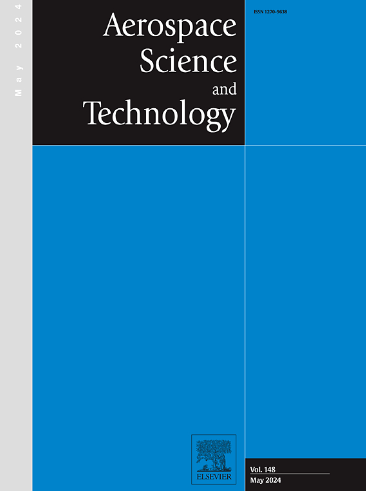外部干扰下基于复合干扰观测器的无人驾驶直升机跟踪控制强化学习
IF 5
1区 工程技术
Q1 ENGINEERING, AEROSPACE
引用次数: 0
摘要
本文章由计算机程序翻译,如有差异,请以英文原文为准。
Reinforcement learning of composite disturbance observer based tracking control for unmanned aerial helicopter under outside disturbances
This paper proposes a reinforcement learning (RL) approach with composite disturbance observer to investigate the tracking control for medium-scale unmanned aerial helicopter (UAH) under outside disturbances and model uncertainties. Each disturbance consists of a modelable component and a bounded time-varying one, which better reflects real-world scenarios. Firstly, to facilitate controller design, the nonlinear UAH model is decomposed into position and attitude loops. Secondly, for the position loop, an actor-critic network structure is utilized to approximate model uncertainties while a design of composite disturbance observer including a coordinated disturbance observer (CDO) and a nonlinear disturbance observer (NDO) is presented to estimate outside disturbance and approximation error. The CDO employs a master DO and multiple slave DOs working in coordination to ensure rapid convergence of modelable disturbances under small gain conditions. Additionally, adaptive laws are developed for the weights of the actor and critic networks. Notably, system modeling error is incorporated into the weight update of the actor network to promote the rapid convergence of the weights. Thirdly, by combining tracking errors with the aforementioned estimations and approximations, a position tracking controller is developed to derive the corresponding closed-loop system. On the other hand, the attitude tracking controller is implemented similarly to the position loop, except for that the dynamic surface technique is employed to simplify analytical calculations. Fourthly, the Lyapunov stability theory is applied to prove that all error signals of the overall closed-loop system are uniformly ultimately bounded, and a co-design method for the CDOs, network weights, and controllers is developed based on a set of inequalities, demonstrating that its capability can not only effectively address the disturbances and uncertainties, but also significantly improve the tracking accuracy and UAH system stability.
求助全文
通过发布文献求助,成功后即可免费获取论文全文。
去求助
来源期刊

Aerospace Science and Technology
工程技术-工程:宇航
CiteScore
10.30
自引率
28.60%
发文量
654
审稿时长
54 days
期刊介绍:
Aerospace Science and Technology publishes articles of outstanding scientific quality. Each article is reviewed by two referees. The journal welcomes papers from a wide range of countries. This journal publishes original papers, review articles and short communications related to all fields of aerospace research, fundamental and applied, potential applications of which are clearly related to:
• The design and the manufacture of aircraft, helicopters, missiles, launchers and satellites
• The control of their environment
• The study of various systems they are involved in, as supports or as targets.
Authors are invited to submit papers on new advances in the following topics to aerospace applications:
• Fluid dynamics
• Energetics and propulsion
• Materials and structures
• Flight mechanics
• Navigation, guidance and control
• Acoustics
• Optics
• Electromagnetism and radar
• Signal and image processing
• Information processing
• Data fusion
• Decision aid
• Human behaviour
• Robotics and intelligent systems
• Complex system engineering.
Etc.
 求助内容:
求助内容: 应助结果提醒方式:
应助结果提醒方式:


